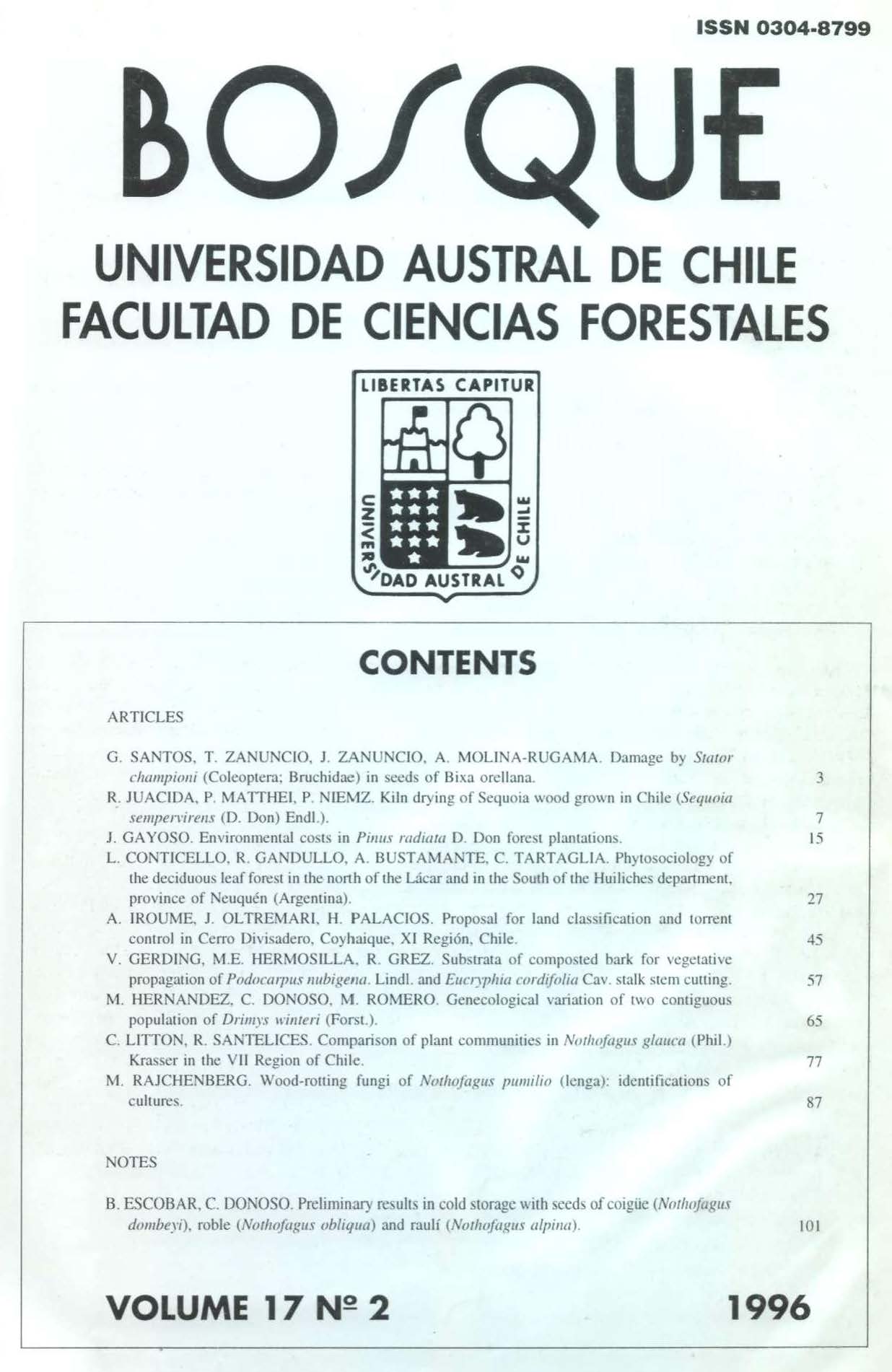Comparison of plant communities in Nothofagus glauca (Phil.) Krasser forests in the VII Region of Chile
Main Article Content
Abstract
Stands of Nothofagus glauca (Phil.) Krasser in the coastal and pre-Andean mountain ranges of the VII Region of Chile were studied to compare differences in the associated woody and herbaceous vegetation. With the use of multivariate analysis, differences among the associated plant communities were correlated with the presiding environmental factors, The factors studied were altitude, slope, aspect, precipitation, temperature, relative humidity, and soils in terms of pH, density, organic matter, and the carbon/nitrogen relationship.
Species richness was found to be highest in the coastal mountain range where a total of 35 species representing 25 botanical families were found. In the pre-Andean mountain range, 26 species from 20 botanical families were found. The differencial species for the coastal region were determined to be Azara integrifolia R. et P., Lapageria rosea R. et P., Gevuina avellana Mol., Adiantum chilensis Kauf., Aextoxicon punctatum R. et P., and Viola portalesia Gay. The differencial species in the pre-Andean region were Lomatia hirsuta (Lam.) Diels. ex Macbr., Quillaja saponaria Mol., and Sophora macrocarpa J. E. Sm.
Along with N. glauca, characteristic species in the studied forests from both regions were Aristotelia chilensis (Mol.) Stuntz., Cryptocarya alba (Mol.) Looser, Lithrea caustica (Mol.) H. et A., and Peumus boldus Mol.
Of the environmental factors studied, altitude, precipitation and relative humidity were found to be the most important in determining differences in the floristic composition of the plant communities in the two regions.

